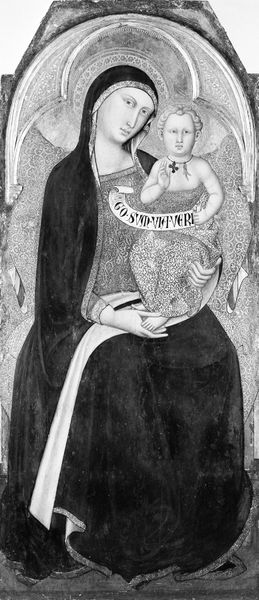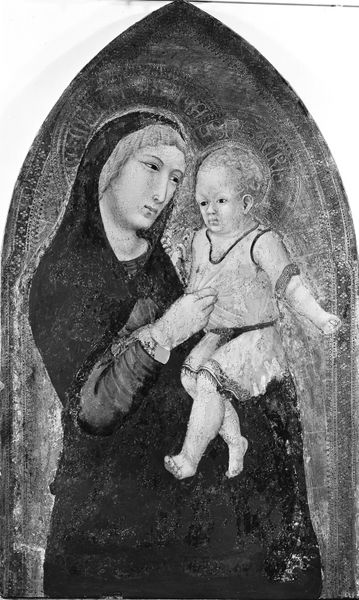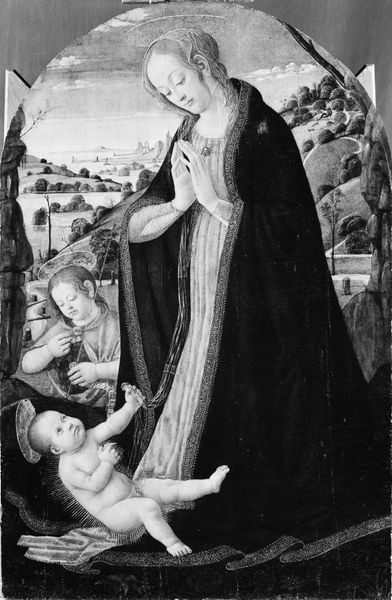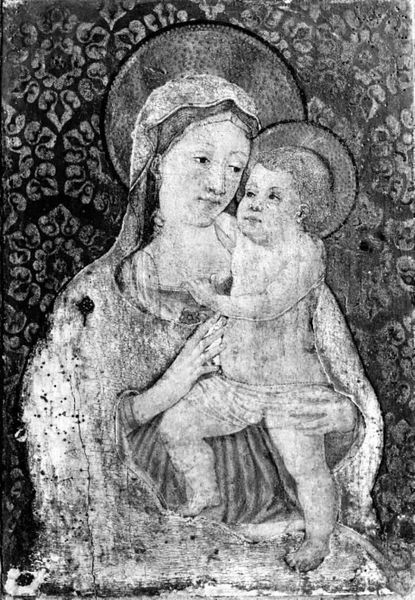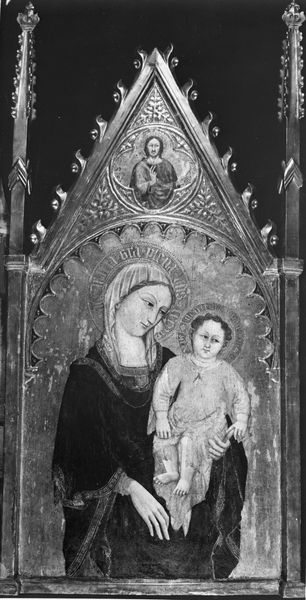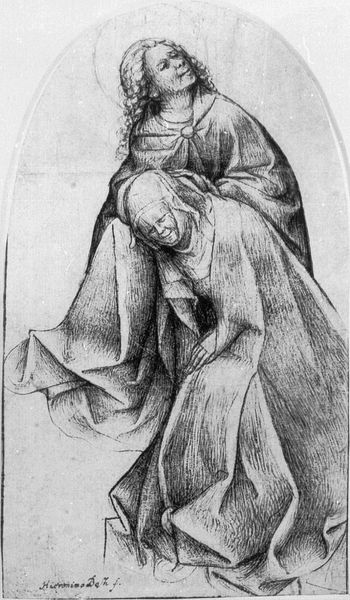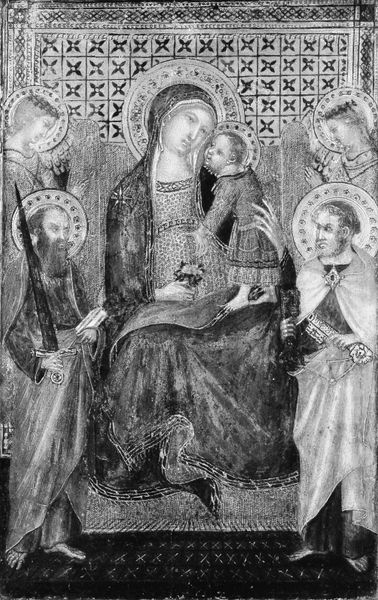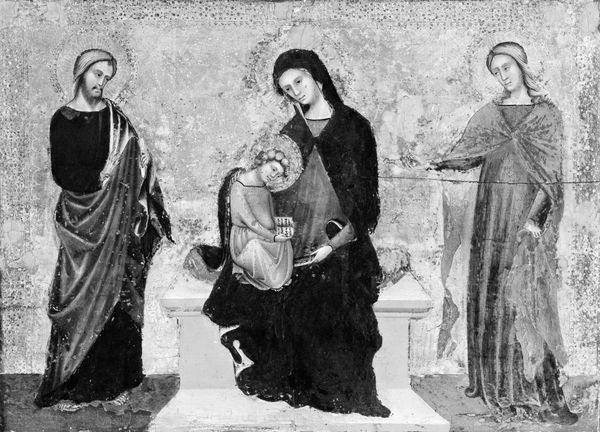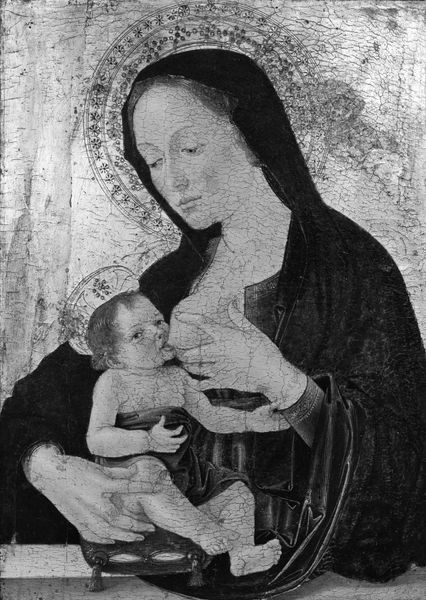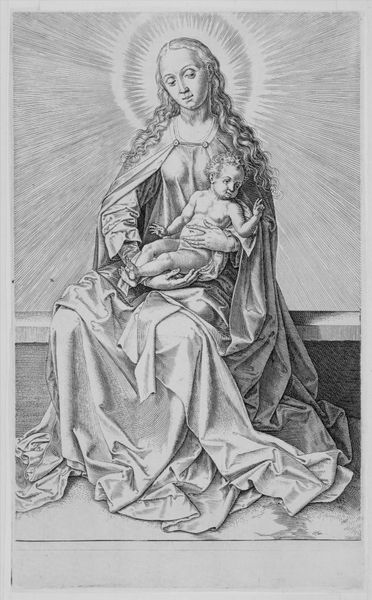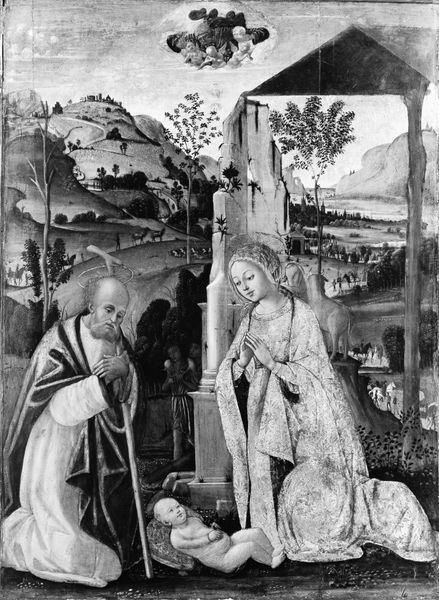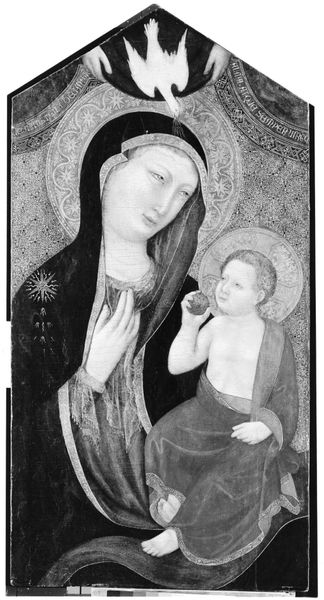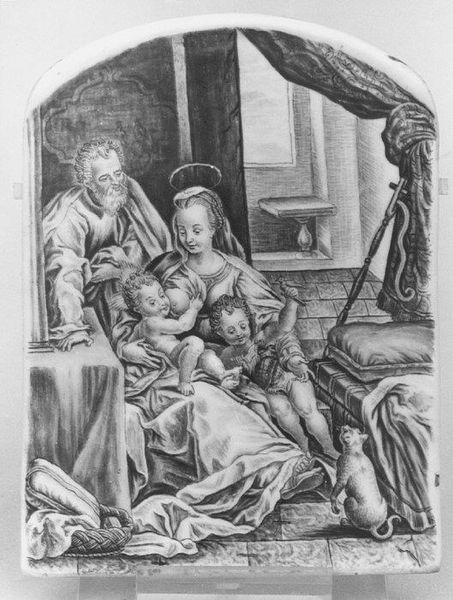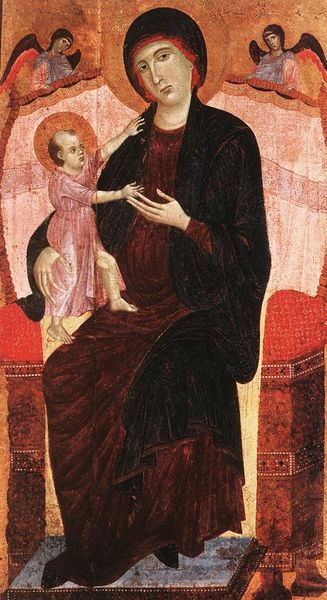
Madonna and Child with Saints 1442 - 1467
0:00
0:00
tempera, painting
#
portrait
#
tempera
#
portrait
#
painting
#
figuration
#
madonna
#
italian-renaissance
Dimensions: Central panel 43 1/4 x 22 1/2 in. (109.9 x 57.2 cm); left wing 45 1/2 x 22 in. (115.6 x 55.9 cm); right wing 45 1/4 x 22 1/4 in. (114.9 x 56.5 cm)
Copyright: Public Domain
Curator: This work, tempera on wood, by Priamo della Quercia, circa 1442 to 1467, is entitled *Madonna and Child with Saints* and resides here at the Metropolitan Museum of Art. Editor: My initial reaction is one of solemnity. There’s a stillness, a contemplative mood set by the muted tones and the Madonna's somewhat melancholic gaze. Curator: Yes, the palette indeed leans heavily into a restrained tonal range, heightening the contrast in textures—note how the patterns of the dress are balanced by the fall of light on Mary's simple, though undeniably refined, veil. I find myself wondering how its semiotic complexity shapes the spiritual experience. Editor: Exactly. I think this highlights the essence of motherhood, or, rather, an ideal: serenity amidst responsibility. We repeatedly see Mary represented with the Christ Child, as much a cultural symbol for compassion as maternal love. Notice how the Infant Jesus gestures outward as a symbol that relates to sacrifice. Curator: Yes, the forward thrusting gesture invites viewers to not only witness but also emotionally connect with this poignant narrative—the subtle dynamism within this two-dimensional piece is masterfully executed through lines, balance and compositional hierarchy, no doubt stemming from his early experiences with illuminations. Editor: This image echoes themes across centuries: innocence juxtaposed with a heavy weight. The halo, while a direct symbol for sanctity, does suggest othering. There is a simultaneous sense of both reverence and removal. I keep thinking about these repeated cultural and historical motifs as attempts to address the nature of being and self. Curator: Certainly, understanding their place within art history reveals continuous development and transformations, shaping and reshaping our ways of visually constructing beliefs. I'm drawn to how della Quercia melds conventional composition with innovative elements to achieve a particular effect on his audience. Editor: Absolutely. Looking at *Madonna and Child with Saints*, one observes visual patterns transcending through temporal and geographical barriers, shaping our interpretations of faith and what we deem sacrosanct. A remarkable intersection, wouldn’t you say? Curator: I concur completely; viewing artworks under different philosophical angles allows us, inevitably, to consider, reconstruct, and refine these views over time.
Comments
No comments
Be the first to comment and join the conversation on the ultimate creative platform.
